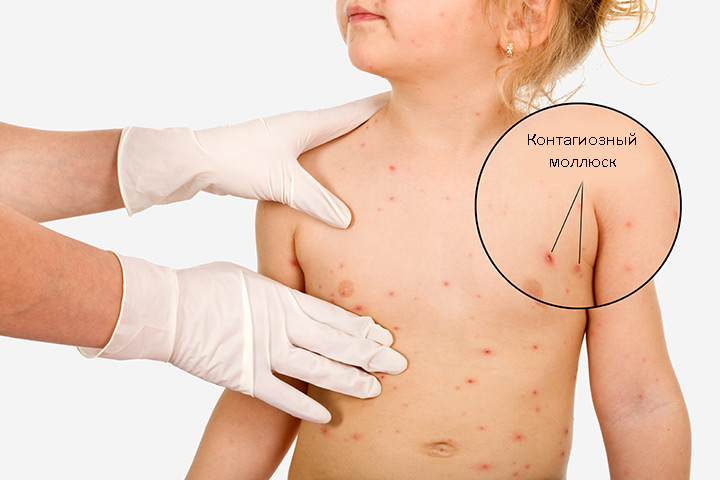
Did the child find contagious mollusk? There is no reason for panic. Modern methods of treatment will forget about the symptoms of a viral disease.
The content of the article
- Causes of contagious mollusk in children
- Symptoms of contagious mollusk in children. What does the molluscise in children look like?
- Contagious mollusk on the face, in front of children, photo
- How to treat contagious mollusk in children? Tablets for the treatment of contagious mollusk in children
- Removing contagious mollusk in children with a laser
- Treatment of contagious mollusk in children with folk remedies
- Contagioine mollusk in children: reviews
In medical practice, the situation is not rare: mother brings a child with skin rashes, the diagnosis of “contagious mollusk” plunges it into shock. Despite the fact that the disease is common, few parents know how it is caused, and how to behave in case of detection in children.
Causes of contagious mollusk in children
Mollusk contagious is not a parasitic disease at all, as anyone might have thought. Its causative agent is not a primitive animal, for mollusk in the general sense. The disease is provoked by DNA-containing Molluscum Contagiosum virus (contagious, or contagious, mollusk). This virus exists in 4 strains variants, the most common from them are MCV1 and MCV2.
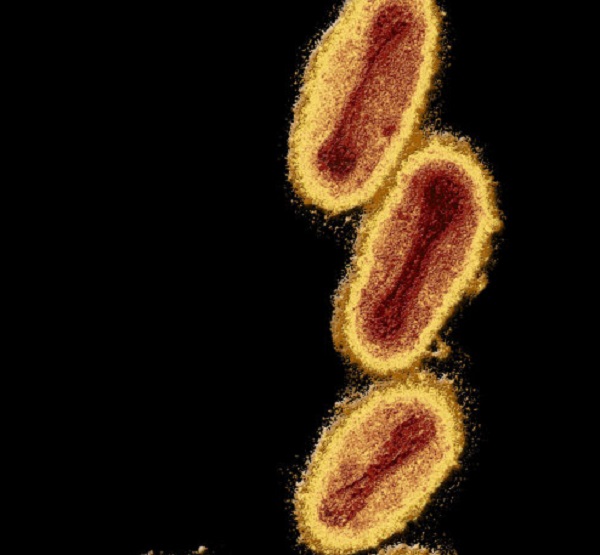
Coupler mollusk is a virus.
Important: all four strains of the Molluscum Contagiosum virus are transmitted only from man to person. Doctors compare them with papillomovirus and virals of smallpox
In a person, an infected “seedling” of the virus is in a cerebrospinal fluid filling the neoplasm on the skin. Molluscum Contagiosum is a very tenacious microorganism, it is able to remain vitality for a long time outside the human body. The source of the virus in the environment is ordinary household dust.
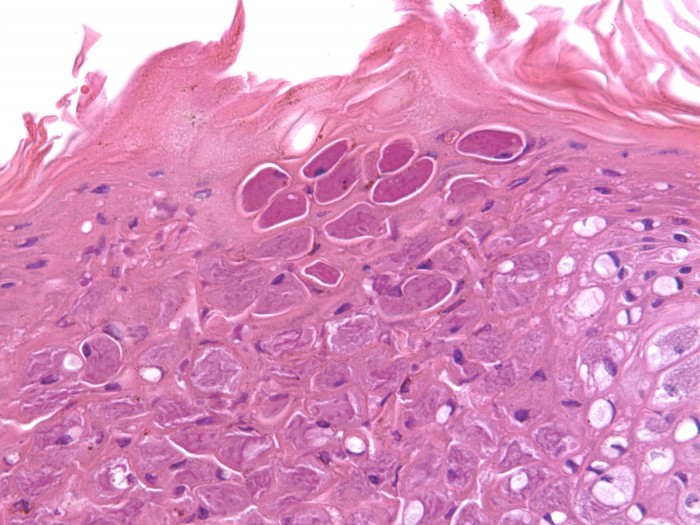
Molluska Taurus in Education.
Since the mollusk contagious contains DNA molecules, once an infection, a person can never completely get rid of it. The way the virus behaves in the body completely depends on the state of immunity:
- The virus is activated at the moment when the immune system fails. For example, after an illness, during the period of vitamin deficiency, after the stress experienced, so on
- After the activities aimed at strengthening immunity, the symptoms of the disease are fading or completely disappear
- With repeated weakening of immunity, the virus is reactivated
Infection of contagious mollusk in children, as a rule, occurs in the household in school or kindergarten, from family members of the house. The rash can be localized on any area of \u200b\u200bthe skin.
In adults, the sexual transmission of the virus is possible, then neoplasms are found near the genitals or directly on them.
Symptoms of contagious mollusk in children. What does the molluscise in children look like?
The Molluscum Contagiosum virus has a long incubation period: from the moment of infection until the first symptoms are manifested, several weeks or months can go.
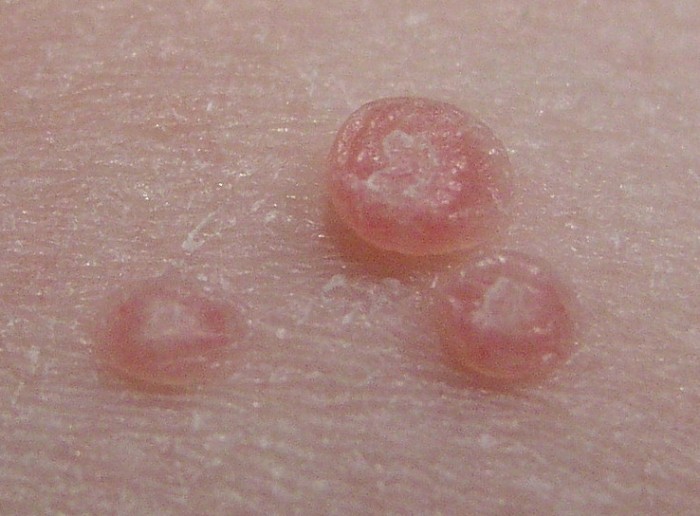
The only symptom of contagious mollusk is rashes on the skin.
The disease is manifested in this way:
- the child has a rash, most often in open areas of the skin
- papules
- formations have a rounded shape
- the size of the rashes - from the tenth millimeter to the centimeter
- the color of formations is the same as the skin color of a sick child, but sometimes it can be a whitish or pearl
- when pressed from formations, granular white contents are released
Important: the rash with contagious mollusk is not felt - it does not hurt, does not bake, does not itch. The child has no complaints against her. If it is localized in hidden areas of the skin, parents can detect it while bathing or changing the child
At first, the rash is single, but over time it affects large areas of the patient's skin.
Important: Molluscum Contagiosum papules themselves do not create discomfort to the child. But very often the rash is complicated by a secondary bacterial infection, begins to blush, itching, and sometimes nest. Then there is a need for the treatment of both the virus and bacteria
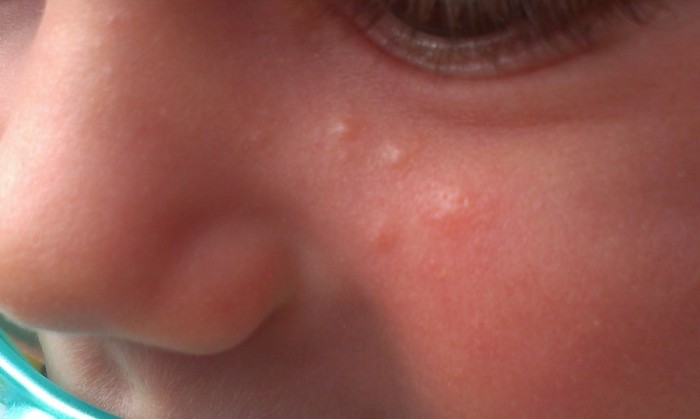
In children, education with contagious mollusk most often appears on the face.
In children, three forms of Molluscum Contagiosum are diagnosed:
- The disease at the stage of typical development. At this moment there are few rashes, they are localized in a certain area of \u200b\u200bthe skin
- The disease at the stage of ingenious development. Now the number of rashes is increasing, they spread on the skin and can be not only on neighboring, but also on remote areas of the skin
- The disease at the stage of complicated development. Education is infected with any other pathogenic microorganism, inflamed, pain, fester
In order to make a child’s “contagious mollusk”, to examine it quite externally, take a blood test and a microbiological analysis of the contents of the neoplasms (it contains a huge amount of Molluscum Contagiosum Tails.
Important: since in addition to the rash of other manifestations of contagious mollusk, children may not give the entities the proper importance, taking them for warts or allergies. Meanwhile, the disease progresses, the child is a danger to others
Contagious mollusk on the face, in front of children, photo
If in adults, formations after infection with contagious mollusky are most often found on the pubis, the genitals itself, around the anus and on the inner thighs, in children it “sprinkles”, usually, face, neck, eyes, hands.
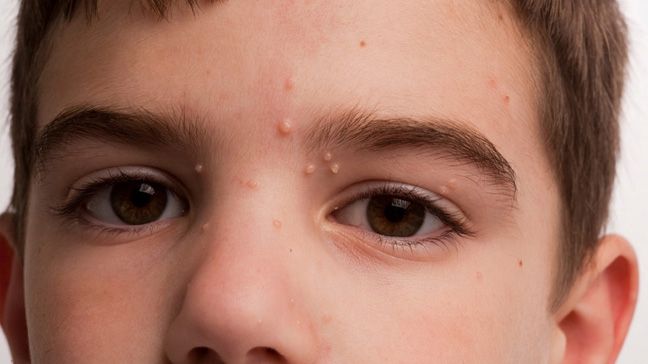
Photo - contagious mollusk on the face of a child.
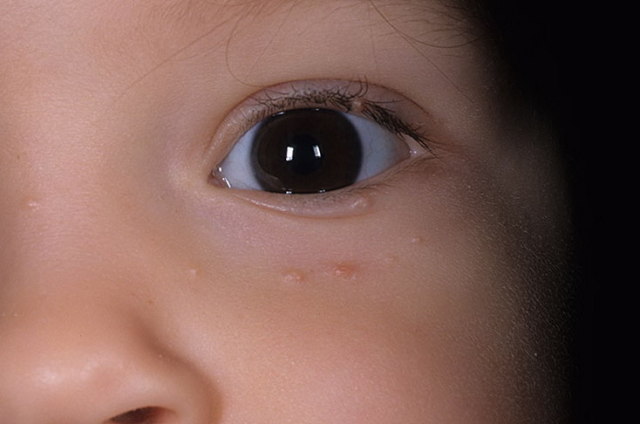
Photo - contagious mollusk in front of the child.
Video with the opinion of a specialist:
How to treat contagious mollusk in children? Tablets for the treatment of contagious mollusk in children
A strong body of an adult is capable of suppressing the virus itself, the symptoms of the disease caused by it through a short period of time pass by themselves. In children, self -healing is observed in exceptional cases: contagious mollusk can progress in their months and years. It must be treated immediately after detection.
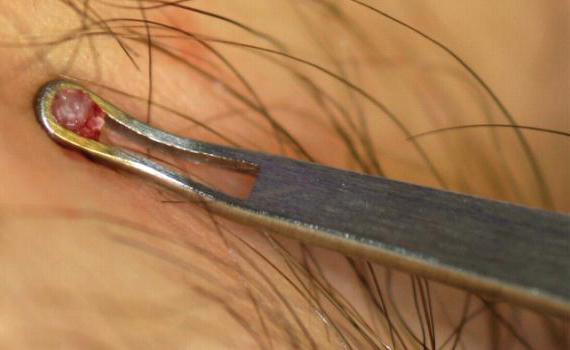
Removal of formations with tweezers.
Treatment of contagious mollusk in children can be operational (removal of education) or conservative (processing of education by local antiviral and anti -inflammatory drugs).
Important: Meanwhile, in Western Europe and the United States, contagious mollusk does not at all consider the disease and do not treat it
Surgical treatment implies:
- Removal or opening of formations. If there are few of them, the doctor opens them with a special spoon. In particularly severe cases, the methods of electrocoagulation, cryodestruction and laser excision are used
- Subsequent processing of skin areas on which there were neoplasms. Usually, iodine is used. But it is possible to use other antiseptic agents, for example, green (it is considered less aggressive)
- Taking measures to strengthen immunity. The child may prescribe antiviral and immunostimulating drugs in the form of tablets or syrups (depending on age), as well as strengthening herbal preparations and any vitamin-mineral complex

Antiviral drug for contagious mollusk
Conservative treatment of Molluscum Contagiosum is considered more suitable for children at an early stage of the disease and provides for the treatment of skin at the rashes of local antiviral drugs. Usually, this is Viferon, Cycloferon, Imikvad, Alder in the form of creams, ointments or gels.
IMPORTANT: Whatever the treatment option is elected, during it it is necessary to clearly observe certain rules. The child cannot be in contact with other children. His clothes, bedding, towels must be rubbed at high temperature and be sure to iron. Cleaning in the house should be done every day, especially wet
Removing contagious mollusk in children with a laser
Laser removal of formations with contagious mollusk is the most “civilized” and safe method. Its advantage is the greatest efficiency with the smallest injuries.
During the procedure, the laser destroys the cells of the epidermis affected by the virus, while healthy areas of the skin are not injured and not burned.

Removing contagious mollusk in children with a laser is one of the most effective ways.
As a rule, the treatment of mollusk with a laser occurs in several sessions, at the same time with which the child receives antiviral and immunostimulating therapy.
Treatment of contagious mollusk in children with folk remedies
Doctors consider self -medication of contagious mollusk barbarism, since:
- it is very difficult to achieve a child’s remission in a child without modern antiviral agents
- with independent removal of formations, there is a great risk of infection with subsequent inflammation and suppuration
Therefore, it is categorically impossible to scrape the papules at home with tweezers, any other device. But to try to increase the immunity of the child so that he will fight the virus more effectively, with the help of folk methods, doctors recommend.
If the contagious mollusk in a child is treated conservatively, along with antiviral therapy, antiseptic drugs are used, which treat the dad on the skin of a child. It can be:
- a solution of potassium permanganate
- a decoction of a series
- celandine oil
- alcohol infusion of garlic
- herbal decoctions and infusions
Recipe No. 1: Alcohol infusion of garlic
Need: garlic - one middle head, vodka - 100 ml.
The garlic is pressed on the press, the gruel is placed in uterine glass dishes, poured with vodka, hermetically closed and left in a dark place for not a week. The mollusk papules are treated three times a day.
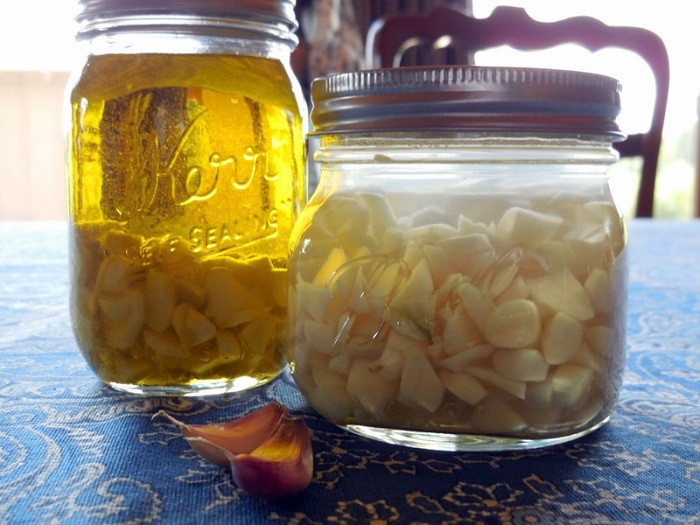
Papules with contagious mollusk can be treated with tincture of garlic.
Recipe No. 2: Collection of herbs for local treatment of contagious mollusk
It is necessary: \u200b\u200bbirch and pine buds, calendula flowers, eucalyptus leaves, yarrow grass in equal proportions.
Take 1 tbsp. a spoonful of collecting and poured 200 ml of boiling water. In an hour, the infusion can be used. They wipe the skin in the places of rashes.

Coupler mollusk can be treated with herbs.
Contagioine mollusk in children: reviews
Despite the fact that contagious mollusk does not cause pain, temperature and other symptoms characteristic of viral infections, it must be treated, since:
- papules will increase in quantity and form conglomerates
- great risk of secondary infection of papules with pathogenic microorganisms
- any virus in the child's body weakens his immunity
- a child with clinical symptoms of a skin mollusk is dangerous for others
Judging by the reviews of the parents who treated the virus in their children by the methods of modern medicine, to overcome the symptoms of contagious mollusk can simply and in a short time.
